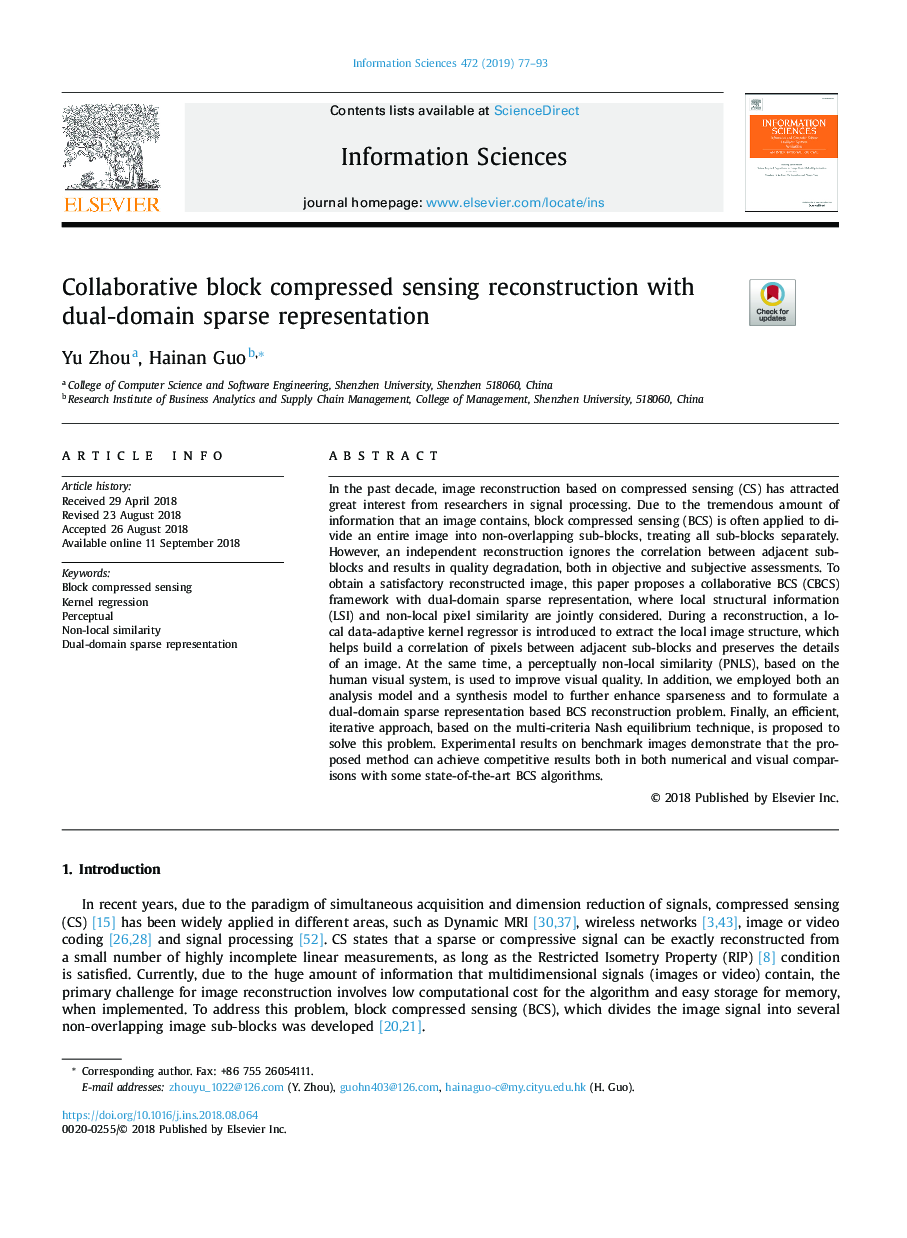| Article ID | Journal | Published Year | Pages | File Type |
|---|---|---|---|---|
| 10150965 | Information Sciences | 2019 | 17 Pages |
Abstract
In the past decade, image reconstruction based on compressed sensing (CS) has attracted great interest from researchers in signal processing. Due to the tremendous amount of information that an image contains, block compressed sensing (BCS) is often applied to divide an entire image into non-overlapping sub-blocks, treating all sub-blocks separately. However, an independent reconstruction ignores the correlation between adjacent sub-blocks and results in quality degradation, both in objective and subjective assessments. To obtain a satisfactory reconstructed image, this paper proposes a collaborative BCS (CBCS) framework with dual-domain sparse representation, where local structural information (LSI) and non-local pixel similarity are jointly considered. During a reconstruction, a local data-adaptive kernel regressor is introduced to extract the local image structure, which helps build a correlation of pixels between adjacent sub-blocks and preserves the details of an image. At the same time, a perceptually non-local similarity (PNLS), based on the human visual system, is used to improve visual quality. In addition, we employed both an analysis model and a synthesis model to further enhance sparseness and to formulate a dual-domain sparse representation based BCS reconstruction problem. Finally, an efficient, iterative approach, based on the multi-criteria Nash equilibrium technique, is proposed to solve this problem. Experimental results on benchmark images demonstrate that the proposed method can achieve competitive results both in both numerical and visual comparisons with some state-of-the-art BCS algorithms.
Related Topics
Physical Sciences and Engineering
Computer Science
Artificial Intelligence
Authors
Yu Zhou, Hainan Guo,
